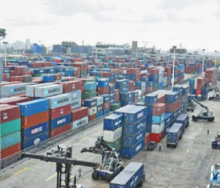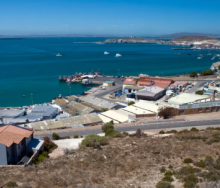The global shipping industry is facing the significant challenge of an ageing merchant fleet and even the current boom in shipbuilding activity will not be sufficient to adequately replace older vessels in time.
This is according to Xclusive Shipbrokers’ weekly report, which highlights that the global shipbuilding industry has witnessed a significant rebound in the past two years, primarily driven by a resurgence in freight rates following the Covid-19 pandemic.
“This surge has led to a notable increase in the orderbook-to-fleet ratios across various vessel segments,” said Xclusive Shipbrokers.
“As of September 2024, the orderbook-to-fleet ratios for bulk carriers, tankers, and gas (LNG & LPG) carriers stood at 10.3%, 12.9%, and 48.4%, respectively. These figures represent substantial increases compared to the previous year and even two years ago,” the report said.
The orderbook-to-fleet ratio for bulk carriers, tankers, and gas carriers has grown by 43%, 180%, and 29% respectively over the past two years.
While the container orderbook-to-fleet ratio declined slightly by 10% since 2022, it remains relatively high at 10.8% in terms of vessels and 24.6% in terms of TEU. The subdued freight rates during the past two years have contributed to this decrease.
“The expansion of the shipbuilding industry has also been evident in the number of active shipyards. The number of active shipyards worldwide has increased by 17.7% over the past two years, from 153 in June 2022 to 180 in September 2024. Chinese shipyards have played a pivotal role in this growth, with a remarkable 37% increase in active yards,” the report noted.
In contrast, the number of active shipyards in Japan and South Korea has remained relatively stable.
Xclusive Shipbrokers said that, overall, the shipping industry was experiencing a period of robust growth, characterised by a significant increase in shipbuilding activity and a rising orderbook-to-fleet ratio across various vessel segments.
“But is the orderbook’s growth and the shipyards’ increase something to cause concern in shipping? Probably not as the shipping industry is facing a significant challenge: an ageing fleet,” the brokers noted.
“As we look ahead to 2030, it's evident that a substantial portion of today's vessels will be over two decades old. This ageing fleet presents a multitude of concerns, from operational efficiency to environmental sustainability as the achievement of IMO 2030 goals is quite difficult to meet.”
In the bulker segment, nearly 30% of the current fleet, both in terms of vessels and deadweight tonnage (DWT), will be over 20 years old by 2030.
This ageing trend is particularly pronounced in the larger vessel sizes, such as Supramax/Ultramax, Panamax/Kmax, and Cape/Nuke, where 27-28% of the current fleet will exceed 21 years of age.
The tanker fleet is also experiencing a similar ageing process. Approximately 48% of today's tanker fleet, representing 284.89 million DWT, will be over 21 years old in 2030.
“When combined with the 831 vessels that will be 19-20 years old, it becomes clear that a significant portion of the tanker fleet is nearing its end of life. Panamax/LR1 and Handysize/MR1 segments are particularly vulnerable, with 62% and 66% of their respective fleets expected to be over 21 years old by 2030,” the report noted.
Container and gas fleets are not immune to this ageing trend.
In 2030, 49% of today's container fleet, in terms of vessels and TEU, will be over 21 years old. Smaller container vessels, such as those between 3 000 and 7 999 TEU, are particularly affected, with 60% of the current fleet expected to exceed 21 years of age.
In the gas carrier segment, approximately 42% of the fleet will be over 21 years old in 2030.
“Despite the recent boom in newbuilding orders, the pace of vessel deliveries is insufficient to rejuvenate the ageing fleet. Even assuming a consistent annual delivery rate of 1 200 new vessels until 2030, it would only be possible to replace 70% of the vessels that will be over 21 years old by that time,” Xclusive Shipbrokers concluded.













